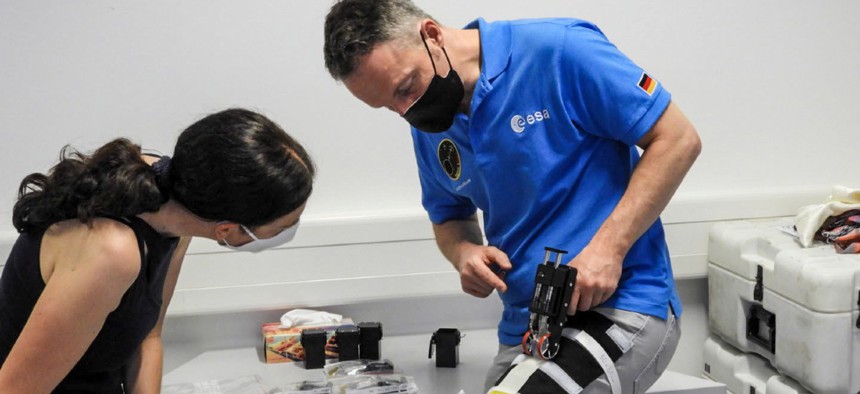NASA Bringing Bioprinting Technology To Space Station

European Space Agency (ESA) astronaut Matthias Maurer demonstrates the Bioprint FirstAid prototype during a training session. Bioprint FirstAid Handheld Bioprinter (Bioprint FirstAid) demonstrates a portable, handheld bioprinter that uses a patient’s own skin cells to create a tissue-forming patch to cover a wound and accelerate the healing process. Image courtesy of OHB/DLR/ESA
The space agency is furthering bioprinting as a safe method for healing wounds in outer space.
In its latest resupply mission, the SpaceX Dragon spacecraft carried bandages made from 3-D bioprinted material to the International Space Station as part of a cargo shipment carrying over 6,500 pounds of various articles.
Described in a NASA press release, the bandages are created with special bioprinting machinery using viable cells and molecules from the injured person to form tissue materials. These tissues can then help wounds heal, keeping them safe in space environments.
The technology is still experimental for NASA, and researchers intend to include it in future missions to both the Moon and Mars.
NASA described the emerging technology as potentially “safer and more flexible” treatment methods.
Bioprinting has been tested and studied before, including at Wake Forest University where scientists researched bioprinted bandages and other first aid care for soldiers wounded in the field back in 2010.
The technology has come a long way since then. NASA chronicled the European Space Agency’s efforts to further test bioprinting with a handheld device intended as a substitute for the large bioprinters used to print tissue.
“As human spaceflight continues to advance towards long-duration missions in low-Earth orbit and to the Moon and Mars, it is important to accurately and adequately identify and characterize the human health risk factors related to the environmental conditions,” NASA authors wrote. “Altered wound healing in space environments makes the treatment of larger injuries more complicated. The bioprinting of living tissue offers a promising tool to overcome this problem. The body's own cells can be extracted from blood and fatty tissue before the mission, and an immediate treatment could be achieved without any time delay—in case of an emergency.”






